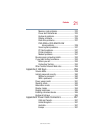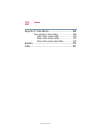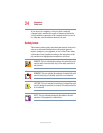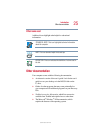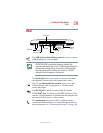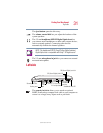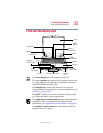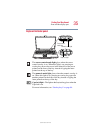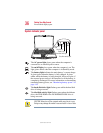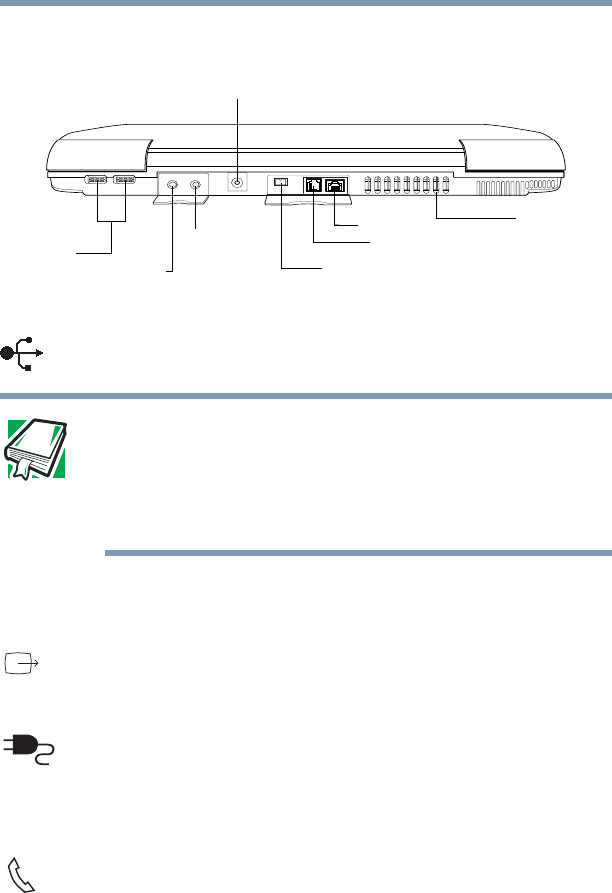
29
Finding Your Way Around
Back
5.375 x 8.375 ver 2.4.0
Back
The USB (Universal Serial Bus) ports allow you to connect
USB peripherals to your computer.
DEFINITION: USB is a peripheral expansion standard that
supports a data-transfer rate of up to 12 Mbps for peripherals such
as keyboards, pointing devices, and monitors. USB peripherals
have a single standard for cabling and connectors. The USB
standard allows hot swapping of peripherals.
The line in jack allows you to play or record sounds when
the computer is hooked up to an external audio source.
The 3.5 mm video/audio line out jack allows you to play
DVD audio and video on a projector or TV that accepts
audio/video inputs.
The DC-IN jack is where you plug in the AC adapter.
The i.LINK
®
port, also known as the IEEE 1394 port, allows
transfers of large quantities of data between the computer and
an external device, such as a video camera.
The modem port lets you use a RJ11 telephone cable to
connect the modem directly to a standard telephone line. For
more information, see “Connecting the modem” on page 104.
LAN port
DC-IN jack
USB ports
Modem port
Video
/audio
line
jack
Line in jack
i.LINK port
Cooling
vents
out



